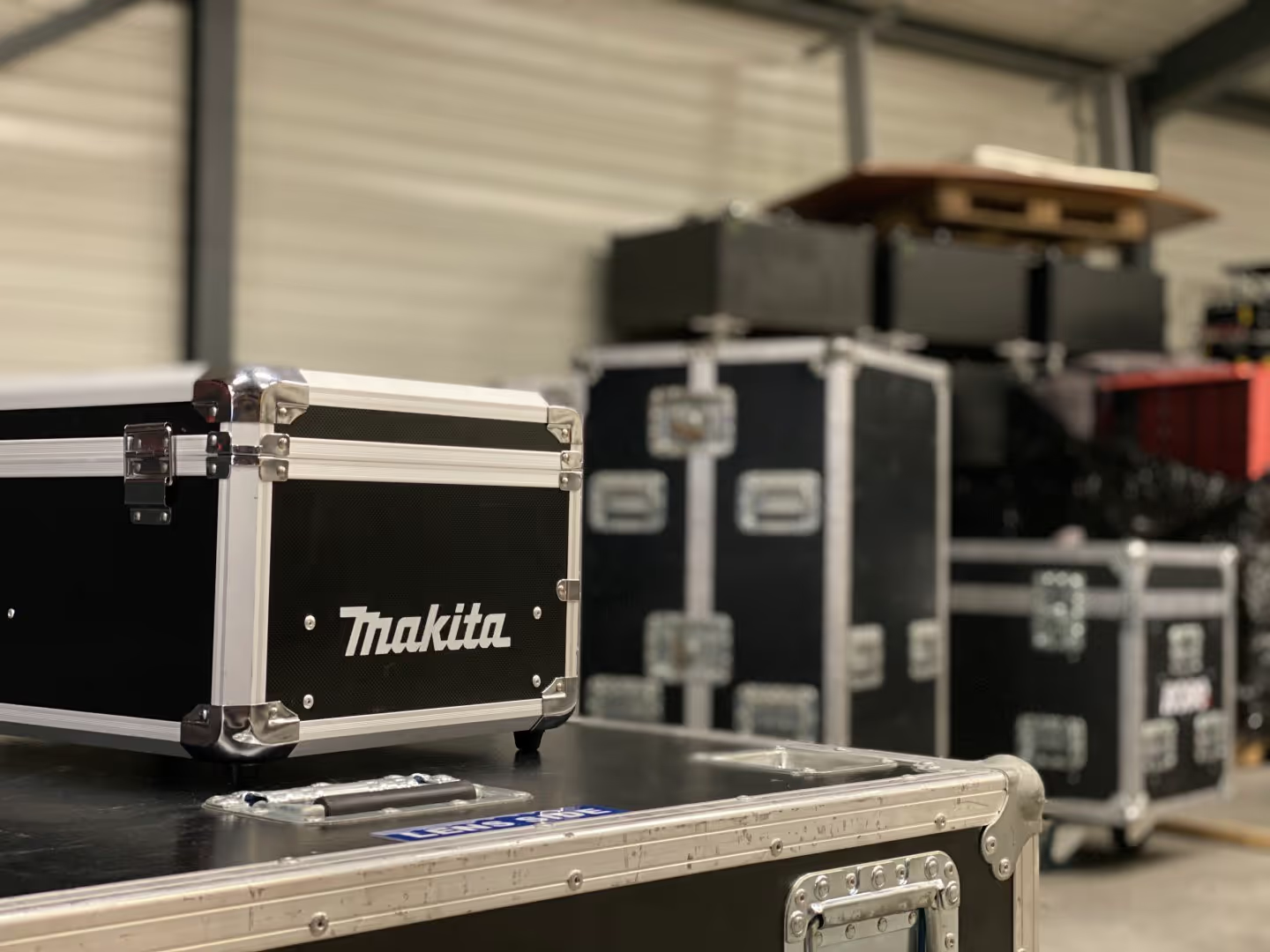Mastering Inventory Planning for AV, Events, and Media Production: A Practical Guide

Effective inventory planning is essential in industries like AV, events, and media production, where maintaining the right inventory levels is critical for meeting customer demand without incurring unnecessary inventory costs. Whether you're managing equipment for a small event or overseeing large-scale media production, mastering proper inventory planning can boost efficiency, optimize cash flow, and ensure you always have the necessary equipment on hand.
In this guide, we'll explore how to optimize inventory management in your business using inventory planning software, the best inventory planning methods, and the tools and strategies that can streamline your inventory control processes.
Understanding Inventory Planning in AV, Events, and Media Production
What Is Inventory Planning?
Inventory planning in AV, events, and media production refers to the process of aligning your inventory needs with production schedules, customer demand, and supply chain capabilities. It involves carefully forecasting future inventory flow and managing the balance between stock levels and demand fluctuations to ensure you maintain sufficient inventory without overspending on excess inventory or overstocking.
The goal is to ensure you have exactly how much inventory is needed to meet consumer demand while minimizing inventory holding costs and storage costs. This is where inventory planning software becomes invaluable by providing the tools for demand forecasting, tracking inventory status, and helping you establish restocking systems that maintain optimal levels.
The Role of Historical Data
Historical sales data and past project demands are essential for accurate demand forecasting. By analyzing these trends, you can predict future inventory needs and avoid poor inventory planning decisions. Leveraging inventory planning tools that incorporate historical data will enable you to forecast demand fluctuations and ensure that you maintain adequate stock levels to meet customer demand.
Common Inventory Challenges in AV, Events, and Media Production
AV, events, and media production businesses face several inventory-related challenges:
- Excess Inventory: Over-purchasing equipment leads to higher inventory costs and storage costs, tying up cash that could be invested elsewhere.
- Supply Chain Disruptions: Delays in deliveries or unexpected shortages can impact your ability to meet customer demand on time, jeopardizing relationships with clients.
- Demand Variability: Fluctuations in customer demand or external factors (like industry trends or seasonal events) make it hard to plan for the exact amount of inventory.
- Equipment Downtime: AV and production equipment can often require maintenance, which may lead to downtime if not tracked and managed effectively.
Strategies for Effective Inventory Management
Demand Forecasting for Inventory Planning
Demand forecasting is a core component of inventory planning processes. By analyzing historical sales data and understanding the external factors affecting your industry, you can accurately predict future inventory needs. For example, inventory software can help you calculate the economic order quantity (EOQ), a model that determines the optimal order quantity to minimize both holding costs and ordering costs.
Forecasting tools will also help you plan for future inventory needs based on specific sales trends and consumer demand, ensuring that you’re always prepared to meet demand without overstocking.
Stock Level Optimization
Effective inventory management is all about maintaining the right stock levels. Just-in-time (JIT) inventory strategies, supported by inventory planning software, can reduce excess stock and lower inventory holding costs by ensuring you only order when needed. By optimizing reorder points and utilizing safety stock buffers, you can better manage demand fluctuations while avoiding excess inventory.
Using inventory management methods like ABC analysis can help prioritize your inventory items based on value, usage, and turnover rates, allowing you to focus on high-demand or high-value items that require the most attention.
Supplier Relationship Management (SRM)
Building strong, reliable partnerships with suppliers is essential for maintaining a responsive and flexible supply chain. A reliable supplier base helps you ensure timely deliveries, and when integrated with vendor-managed inventory (VMI), suppliers can help you maintain optimal inventory levels without the need for constant reordering. A solid inventory management system can also help you track supplier performance and establish benchmarks, ensuring your supply chain runs smoothly and minimizes disruptions.
Tools and Technologies for Inventory Planning
Inventory Software and Systems
The right inventory planning software can help you automate much of the inventory management process. These systems can provide real-time visibility into your inventory status, track usage across multiple locations, and even automate reorder processes. Features like barcode scanning, RFID technology, and automated stock tracking help improve the accuracy of your inventory records and ensure you’re always prepared to meet demand.
A good inventory system also integrates with sales data and production schedules to offer a comprehensive view of how inventory is performing, helping you make more informed decisions about inventory allocation and inventory turnover.
Benefits of Automation in Inventory Management
By automating manual processes, inventory control becomes much more efficient. Automated alerts for low stock levels and inventory turnover rates allow you to avoid excess stock while ensuring you always have enough inventory to meet demand. With the ability to track inventory items in real time, you can improve inventory planning efforts and reduce inventory costs across the entire supply chain.
Economic Order Quantity (EOQ) and Inventory Planning Models
Understanding how to calculate economic order quantity (EOQ) is essential for effective inventory management. EOQ helps businesses determine the most cost-effective order quantity that minimizes both ordering costs and inventory holding costs. By using EOQ models, you can plan ahead and avoid ordering too much or too little inventory. This is particularly useful in industries like AV and media production, where equipment needs are unpredictable and can change rapidly.
Best Practices and Tips for Efficient Inventory Planning
Lean Inventory Techniques
Adopting lean inventory techniques like JIT and Kanban systems can help streamline your inventory control efforts. By minimizing unnecessary inventory and focusing on quick, efficient replenishment, you can reduce holding costs and improve cash flow. Lean strategies also focus on eliminating inefficiencies in your inventory management processes, ensuring that your business is always responsive to changes in customer demand.
Continual Improvement and Key Performance Indicators (KPIs)
Successful inventory planning is an ongoing process of refinement. By using key performance indicators (KPIs) to monitor the efficiency of your inventory planning processes, you can identify areas for improvement and adjust your strategies accordingly. Regular audits and reviews will ensure that your inventory system stays aligned with evolving production schedules and customer needs.
Industry-Specific Inventory Insights
Different sectors in AV, events, and media production face unique challenges when it comes to inventory management:
- AV Equipment: Track the lifecycle of your gear and implement regular maintenance checks to ensure equipment is ready for use when you need it.
- Event Management: Optimize inventory allocation for quick turnaround between events, using inventory planning tools to track and manage high-demand items.
- Media Production: Implement inventory software that integrates with project schedules to ensure raw materials and production equipment are available on time and within budget.
Conclusion
By leveraging inventory planning software, optimizing stock levels, and incorporating demand forecasting, you can ensure that your operations are more efficient, cost-effective, and responsive to customer demand. The key is to use the right inventory planning methods and tools to manage inventory with precision, avoid excess inventory, and streamline your supply chain. By focusing on accurate inventory planning, you’ll be able to meet customer demand, reduce inventory costs, and drive business growth.
Ready to transform your planning processes? Try Rentman—the operations management platform built to support events and media production teams. Discover how Rentman’s crew and inventory management solutions can support your business and improve your operations today.
FAQ
Frequently asked questions
No items found.
Previous blog posts

Maximizing Efficiency with Equipment Scheduling Software: A Practical Guide for AV, Events, and Media Production
Maximizing Efficiency with Equipment Scheduling Software: A Practical Guide for AV, Events, and Media Production

How Inventory Planning Software Can Transform Your AV and Events Business
How Inventory Planning Software Can Transform Your AV and Events Business

